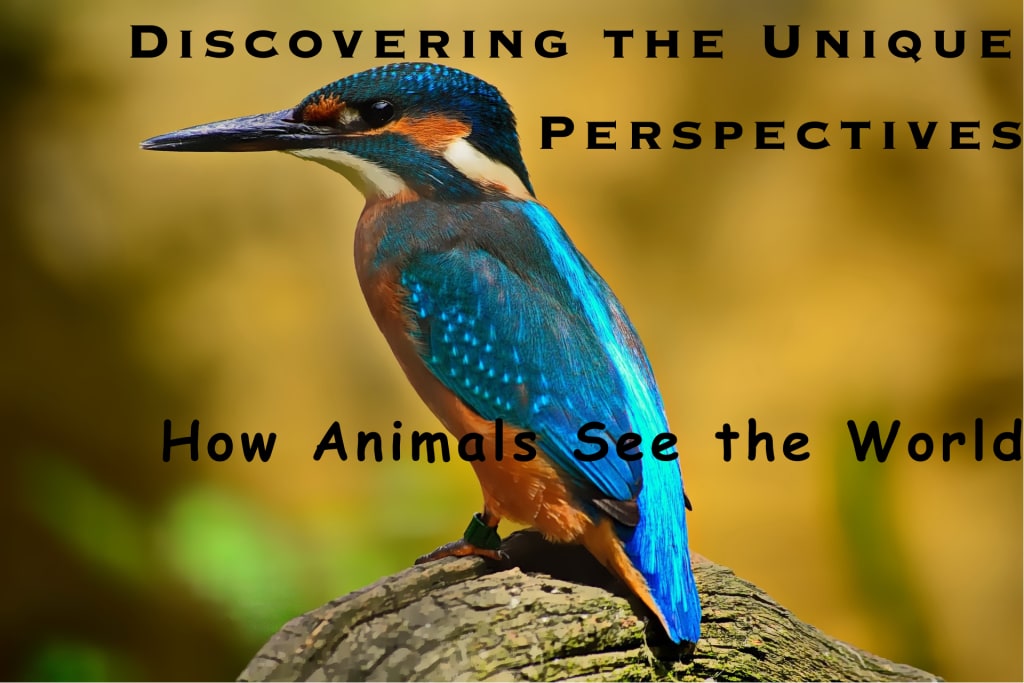Discovering the Unique Perspectives
How Animals See the World

Did you know that animals perceive the world quite differently from humans? For instance, pigeons actually have better vision than humans. Let's take a moment to explore how various animals see the world.
Snakes have a unique way of seeing; they possess special infrared-sensitive receptors in their snouts, enabling them to detect the radiated heat of warm-blooded mammals. Cows, on the other hand, don't see colors as vividly as humans do. They lack the necessary receptors in their retinas to perceive red, seeing mainly variations of blue and green. Additionally, cows have near-panoramic vision, with the only blind spot being directly behind them.
Horses, too, have a blind spot right in front of their faces due to their eye placement. Their color perception is limited compared to humans, mainly perceiving greens, yellows, and blues. Fish, with their ultraviolet receptors and spherical lens, enjoy nearly 360-degree vision and see similar colors to humans, although light behaves differently underwater, making it challenging to discern red shades.
Deep sea fish, however, have adapted to see well in the dark. Sharks, though, lack the ability to distinguish colors, but their underwater vision is clearer than ours. Birds, unlike humans, can see ultraviolet light, which aids in navigation and identifying mates. Falcons and Eagles have incredible focusing abilities and can spot small objects from miles away.
Insects have fascinating vision patterns too. Flies have thousands of tiny eye receptors that work together, providing them with a broad view of their surroundings, even in slow motion. Bees, however, can't perceive the color red and see it as dark blue.
Rats also lack the ability to see red, and each of their eyes moves independently, which often makes them see double. Cats have a wide-angle view and see colors like brown, yellow, and blue but lack sensitivity to red and green. Interestingly, in low-light conditions, cats' vision becomes highly efficient, six times better than that of humans.
Dogs can't see red or orange, but they excel at seeing blue and violet, and they can differentiate 40 shades of gray. Chameleons possess remarkable eyes that can move independently, providing them with a 360-degree field of vision without turning their heads.
Snakes have evolved specialized infrared-sensitive receptors in their snouts, known as pit organs. These heat-sensing pits allow them to detect the infrared radiation emitted by warm-blooded animals. This incredible feature helps snakes hunt efficiently, even in complete darkness or low-light conditions. It's almost like they have a built-in thermal camera!
Cows, while having a nearly panoramic field of vision, perceive the world quite differently in terms of colors. They lack certain color receptors in their retinas, including those responsible for detecting red. As a result, their world appears predominantly in shades of blue and green. This color limitation might be related to their herbivorous nature, as they primarily need to distinguish between different vegetation types rather than chasing colorful prey.
Horses, with their eyes located on the sides of their heads, have excellent peripheral vision. However, this comes at the cost of a significant blind spot right in front of their faces. This is why you might have noticed horses turning their heads to focus on objects or people in front of them.
Unlike humans, many fish species have a unique adaptation for underwater vision. They possess ultraviolet receptors in their eyes, which allows them to see ultraviolet light. This ability is essential for various functions such as finding food, detecting mates, and navigating through their underwater habitats.
Deep-sea fish live in one of the most challenging environments on Earth, where natural light is scarce. To survive in this darkness, these fish have developed highly sensitive eyes that can capture even the faintest traces of light. Their eyes are adapted to perceive bioluminescent signals from other creatures, which is vital for communication and finding prey in their pitch-black surroundings.
Birds have some of the most fascinating visual abilities among animals. One remarkable feature is their ability to see ultraviolet light, which is invisible to the human eye. This allows them to spot patterns on flowers that guide them to nectar, and it helps them differentiate between males and females of their species. Additionally, many bird species have excellent focus and visual acuity, enabling them to spot tiny prey from great distances.
Insects, particularly flies, have complex compound eyes with thousands of individual lenses. This unique design allows them to see a broader field of view than humans and even detect motion in a way that appears to us in slow motion. The ability to see in slow motion is incredibly useful for avoiding fast-moving threats, such as predators or swatting hands.
Imagine having 360-degree vision like a chameleon - wouldn't that be fascinating? Share your thoughts in the comments below. If you found this information intriguing, feel free to like and share this article with your friends. To satisfy your curiosity further, click on my profile to check out other articles and stay informed on the bright side.
About the Creator
Maureen Ejikeme
I'm a writer bringing you the most information on Mystery, Facts, News and Psychology.






Comments
There are no comments for this story
Be the first to respond and start the conversation.